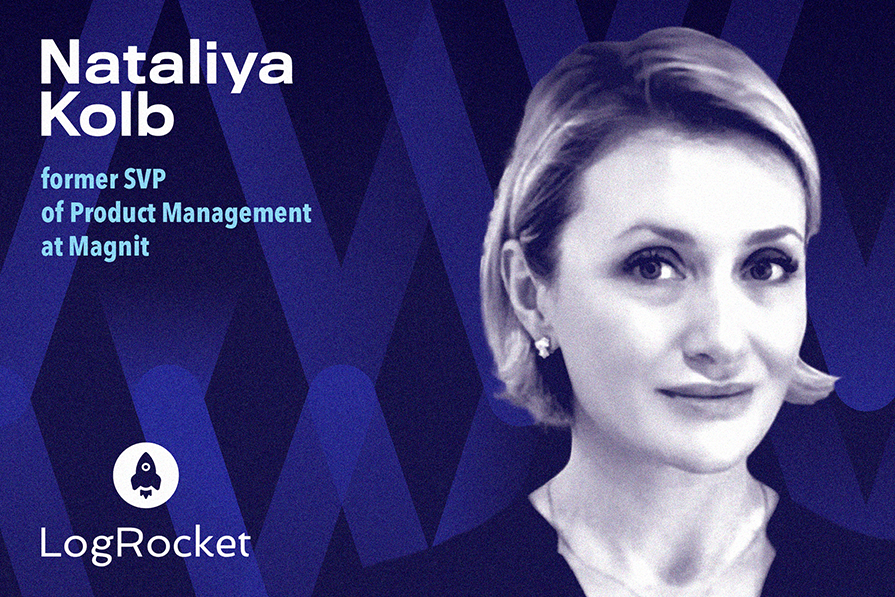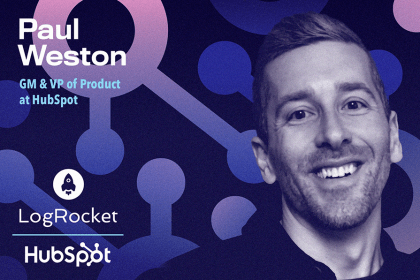Nataliya Kolb is a product and design leader and former SVP of Product Management at Magnit, a workforce management company. She began her career as a product manager at Xpherix, Inc before joining MedeAnalytics, where she worked for five years. Nataliya then transitioned to a senior manager of product development role at CarePayment before taking a product manager role at PRO Unlimited (now Magnit).She played a key role in transforming the company from a single product to a multi-product platform and guiding the product team through a period of hyper-growth.

In our conversation, Nataliya talks about the importance of taking a data-driven approach to roadmapping when defining or fine-tuning a product vision. She also discusses her career journey, as well as the three strategies that helped Magnit maintain a competitive edge in a growing market.
Ever since I was a kid, I had a thing for math. So, when it was time to choose a college major, computer science seemed like the perfect fit. It combined my love for math and logic with the new challenge of coding. I thought, “If I’m good at math, how hard can coding be?” Well, after many sleepless nights debugging and writing code for my college assignments, I came to a realization: while I enjoyed the challenge, software engineering wasn’t my true calling.
Being in Silicon Valley, I knew I wanted to stay in the tech industry, but I craved something more creative. That’s when I discovered the roles of product managers and UI designers. These roles offered a perfect blend of technology and creativity. Intrigued, I pursued my first job as a product manager at a small startup. That’s how my journey in product management began, and I’ve loved every minute of it since.
My first job out of college was as a product manager at a tiny startup with just 15 people. In such a small team and being the only product manager, I had to wear many hats, which was both challenging and exciting.
I did anything and everything — from documenting requirements and meeting with end users to collecting feedback and designing new features to testing the product before the release and educating our sales and marketing on new features.
Our big innovation, by the way, was syncing people’s work calendars with their flip phones. Can you believe that? It’s mind-blowing to see how far technology has come in just 17 years.
Those early days were full of learning and adapting. I had to be super flexible and resourceful, and I quickly realized how crucial it was to really listen to our users. Those lessons have stuck with me throughout my entire career.
After my time at that first startup, I spent five years in early-stage healthtech companies, managing product, design, and development. But then, my healthtech employer decided to close their San Francisco offices and move everything to Oregon, leaving me open to new opportunities. That’s when I got a call from a recruiter about a position at PRO Unlimited, now known as Magnit. Honestly, I didn’t take the call too seriously at first. I had never heard of the company or the industry, but I needed a job, so I figured, why not take the plunge?
And wow, what a plunge it was — probably one of the best decisions of my career. To give you an idea of what Magnit does, it’s an integrated contingent workforce management platform — think of it as Workday for contractors.
When I joined PRO about 11 years ago as their senior product manager, they were starting to scale their product organization and invest in growth and innovation. My first big project was designing a native mobile app for their Manager and Worker user segments. With limited experience in mobile product design and development and no mobile development team, I felt like I was stepping into my “first job” all over again — wearing multiple hats, staying flexible and resourceful, and constantly engaging with end users.
I quickly built an institutional knowledge team, hired a mobile design and development crew, and within about eight months, we launched the industry’s first native mobile app. The app was a huge success, earning us a “Cool Vendor” award from Gartner.
After the mobile app launch and several promotions to VP of product, I took on the challenge of managing end-to-end product management and design for the Magnit platform. I shaped the product vision, roadmap, and led various design initiatives, guiding the product and design team through the company’s hyper-growth stage. We transformed our outdated vendor management solution (VMS) into a multi-product platform, turning the company into a billion-dollar industry leader.
Even though I’m no longer with Magnit, it was an incredible journey where I grew both personally and professionally. And now I’m taking a well-deserved break after a successful private equity exit.
As the company grew, our roadmap strategy evolved significantly. We had to introduce product strategy and roadmapping frameworks to help us scale as we expanded from a single product line to a multi-product, omni-channel platform. I could talk for hours about the details, but I’ll focus on three key strategies that really helped us maintain a competitive edge.
First, we strategically allocated a portion of our product budget to research and development. This allowed us to explore emerging technologies and innovative solutions, ensuring our product roadmap always included new and transformative features.
Second, we added quantitative and qualitative metrics to each item in our product roadmap, including the product backlog. This helped us secure buy-in from the C-suite and stakeholders for our plans each quarter. It also enabled us to make data-driven decisions as we prioritized our product roadmap every quarter.
The third strategy might raise a few eyebrows: we shared our external product roadmap with our clients and external stakeholders on a regular basis. This transparency was extremely well-received. It demonstrated our commitment to the product, ensured alignment with our clients’ needs and market trends, and fostered open collaboration. It also built trust and positioned us as thought leaders in the eyes of our customers.
To stay competitive, fostering innovation within our teams and organization was essential. We ensured that a specific percentage of our product roadmap was always dedicated to innovation. The same logic, along with our key metrics, was applied to feature requests, bugs, and tech debt.
It may sound straightforward, but our product roadmap was actually packed with columns of data points, metrics, and business drivers. We reviewed these allocations before each release and made necessary adjustments. As anyone in product management knows, the roadmap prioritization process is never a straight line. That’s why it was crucial for us to be intentional about leveraging data to make informed decisions. This approach helped us balance innovation, feature requests, bug fixes, and tech debt effectively.
Absolutely, taking a data-driven approach to roadmapping is crucial when defining or refining your product vision. While your product roadmap should always align with your company’s core mission, it’s important to blend this with both quantitative and qualitative data. This includes factors like new revenue opportunities, customer requests, market differentiators, and impact-effort assessments, depending on your specific business drivers.
By integrating this data, you ensure that every feature and enhancement supports your overarching product vision. This approach helps balance business goals with customer needs, ultimately impacting your bottom line — revenue.
Yes! We used a few practices to make our product roadmap data-driven: First, we tracked, analyzed, and interpreted relevant product and client data, including usage metrics, win and loss data, and other key indicators. This helped us define clear performance metrics and measures of success.
Then, we used these metrics to score every item on our product backlog and roadmap. This way, everyone—from the product team to the C-suite and stakeholders—could see exactly why we prioritized certain initiatives over others. It kept the product team focused on delivering real, measurable value and ensured we all worked towards the same big-picture goals.
I pretty much use generative AI on a daily basis. There are numerous tools and methods out there to help product teams leverage generative AI. For example, you can use it to analyze customer feedback from surveys, reviews, and support emails. Doing this can help you to fine-tune your product’s vision and also provide you with up-to-date information on industry trends or competitor activities.
On a simpler level, ChatGPT can help automate very time-consuming and mundane tasks. It can actually give you a ton of information.You can also use generative AI to draft reports, compile product requirements, or summarize meeting notes in an actionable, easy-to-digest way. I’m not saying that we should rely on generative AI solely, but it definitely helps to make certain processes more efficient. Also, while generative AI doesn’t have the context that you have, it can present the information from a perspective that you haven’t thought about.
Ultimately, if you’re a product manager in a high-growth company or fast-paced startup, there are so many things that you need to be mindful of, and generative AI can help you get a lot of time back in your day.
gd2md-html: xyzzy Tue Aug 06 2024
LogRocket identifies friction points in the user experience so you can make informed decisions about product and design changes that must happen to hit your goals.
With LogRocket, you can understand the scope of the issues affecting your product and prioritize the changes that need to be made. LogRocket simplifies workflows by allowing Engineering, Product, UX, and Design teams to work from the same data as you, eliminating any confusion about what needs to be done.
Get your teams on the same page — try LogRocket today.
Want to get sent new PM Leadership Spotlights when they come out?

Trey Courtney talks about his process for evaluating partnerships or acquisitions and how he successfully implements these initiatives.

Asma Syeda shares the importance of responsible AI and best practices for companies to ensure their AI technology remains ethical.

What hard skills do PMs need in 2025? Learn how AI tools can help you level up in SQL, Figma, A/B testing, and more.

Paul Weston talks about “quantifying the unquantifiable,” i.e., bringing in objective data for things that otherwise seem hard to measure.